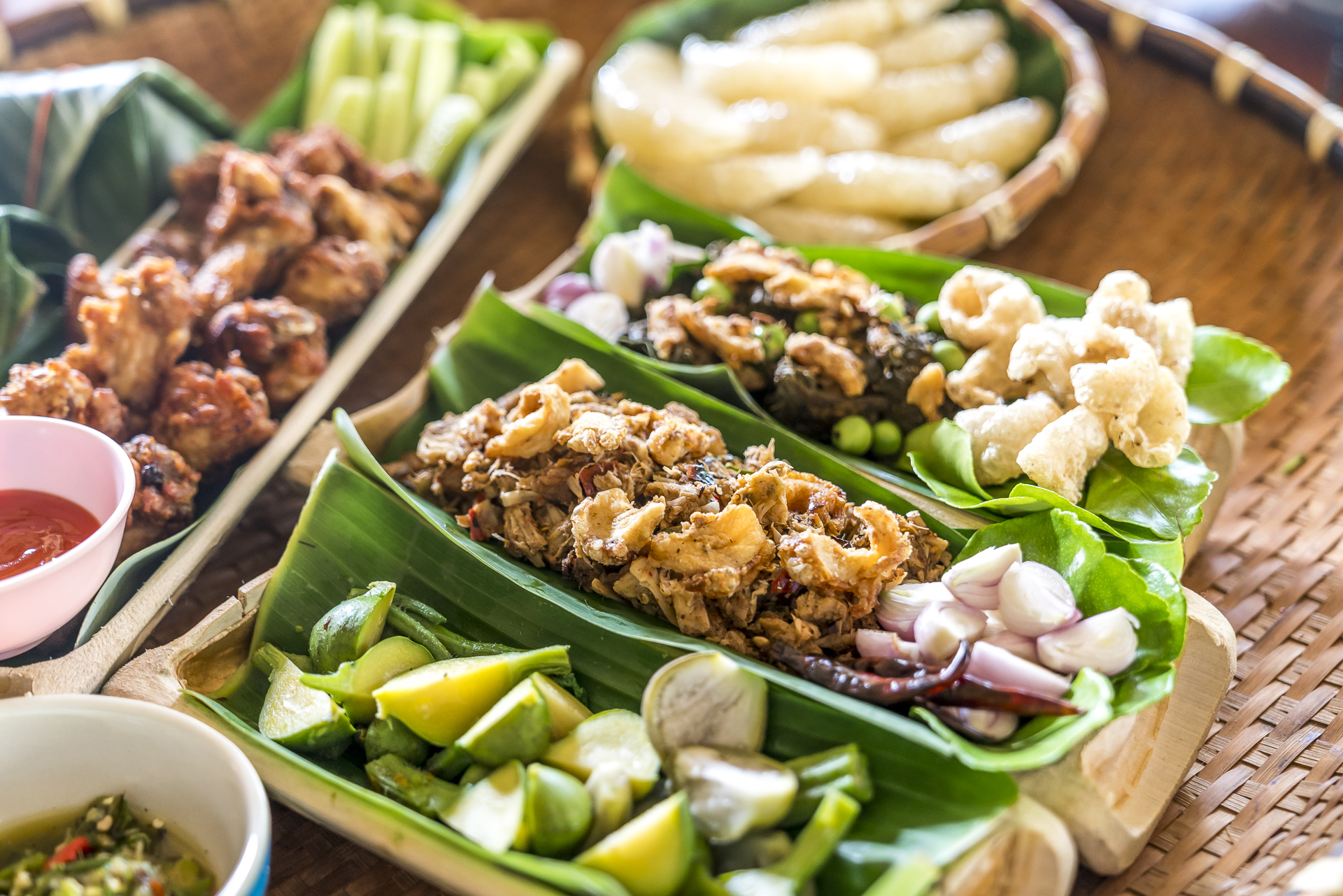
7 delicious Thai dishes that remind me of Thailand
Advertising: Contribution in cooperation with the Thai Tourism Board
It’s been 18 months since my last long-distance trip, which took us to northern Thailand in autumn 2019. For us, this was the second trip to the Land of Smiles. After the first trip in 2008 (sorry, that’s a long time ago!) led to a mixed conclusion, the second time we really pulled our sleeves in. With its cultural diversity, the friendly people and all the culinary delights, Northern Thailand has inspired us. In January 2020, I had finally prepared the material into a travel guide for Northern Thailand rich in pictures and information. A few weeks before a nasty virus turned our – and probably yours – travel plans upside down.
Luckily, we didn’t just bring back photos from our trip, but also a food diary. In it, I had written down all the dishes I had tried on the trip. And so, in the past 12 months, the weekly culinary trips (self-cooked or self-ordered) have made me reminisce more than once. For you I have now rummaged through the photos again and put together my favorite Thai dishes. As a suggestion to cook at home or to make a note of for your next trip to Thailand. Gin Hai Aroy!
Khao Soi – the Northern Thai Specialty
A speciality that you should definitely try on a trip to northern Thailand is the spicy coconut curry soup “Khao Soi”. In Chiang Mai and Chiang Rai, the soup enriched with fried noodles and chicken is available in various food stalls. Pickled vegetables (cabbage), shallots and limes are served with it. The perfect blend of sweet and sour, crispy and nutritious.
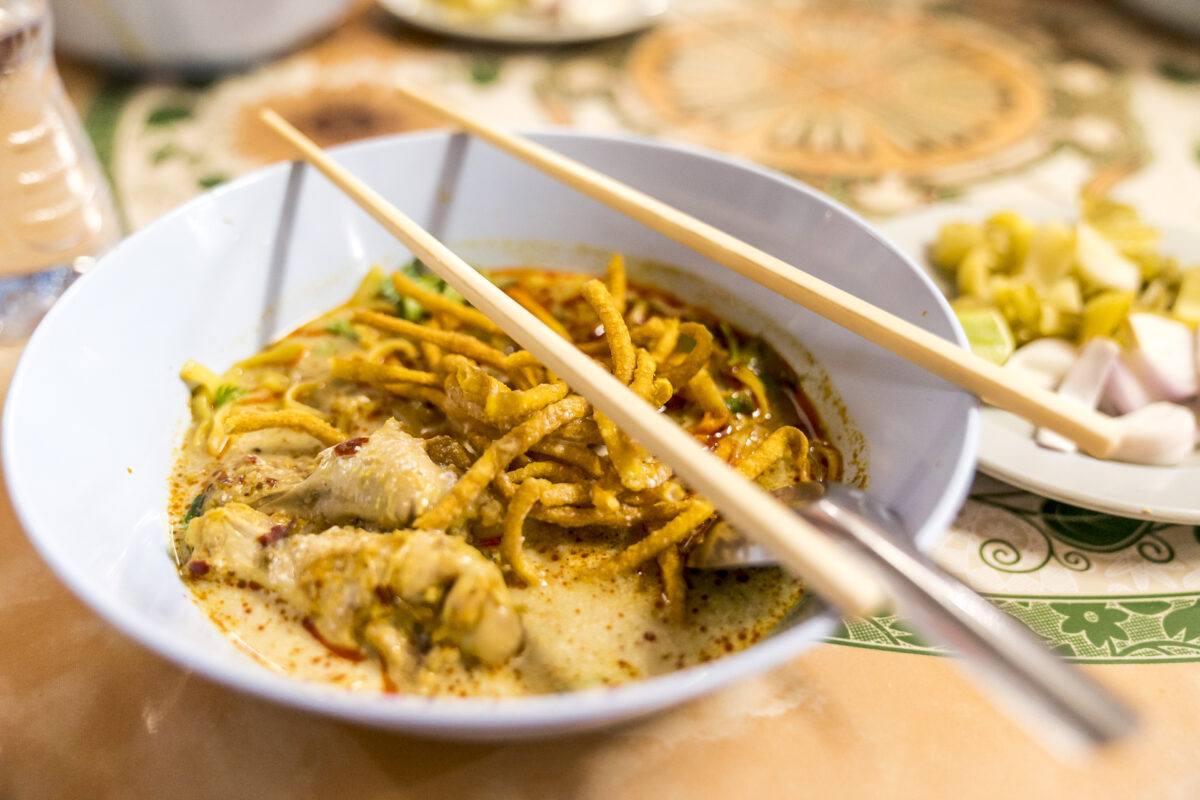
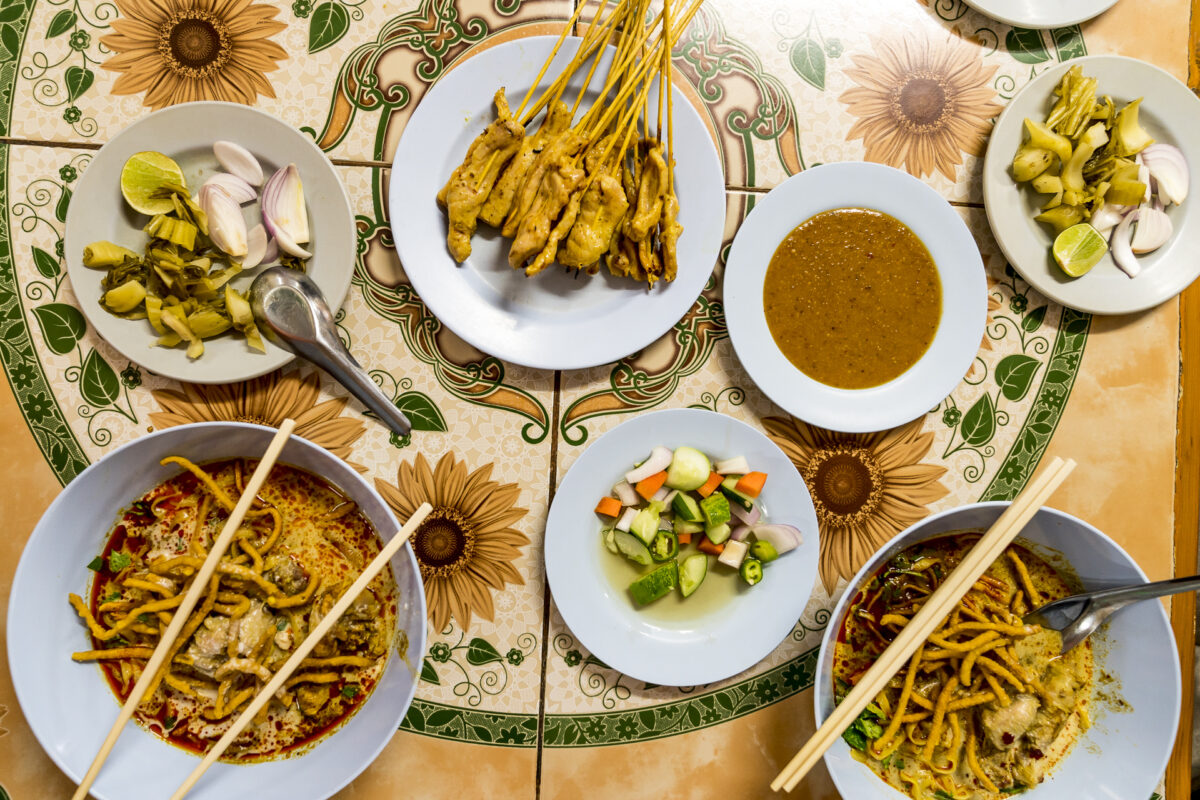
To cook at home you need the following ingredients:
- Asian Wheat Noodles
- Currypaste
- Coconut milk
- Chicken or beef (or tofu)
- Pickled, sour vegetables
- Lime
- Spring onion
- Fish Sauce & Soy Sauce
If you want to make the curry paste from scratch, you can find instructions in the linked Khao Soi recipe.
Pad Thai – the classic of Thai cuisine
Pad Thai is something like the national dish of Thailand and it is on the menu in almost every Thai restaurant. The main ingredients of a Pad Thais include flat rice noodles, beaten eggs, fish sauce, garlic cloves, chili powder, and lime juice.
When it comes to effective implementation, however, there are almost no limits to personal preferences or even what the refrigerator (or the field) has to offer. We enjoyed our best Pad Thai not far from Chiang Mai in the village of Ban Luang Nuea. Together with the local Tai Lue community, we cooked a Pad Thai with ingredients that we had harvested ourselves in the fields around the village. It doesn’t get much better than this. The local Pad Thai variations, which are offered as street food at the markets (e.g. the Sunday Night Market in Chiang Rai), are also very fine.
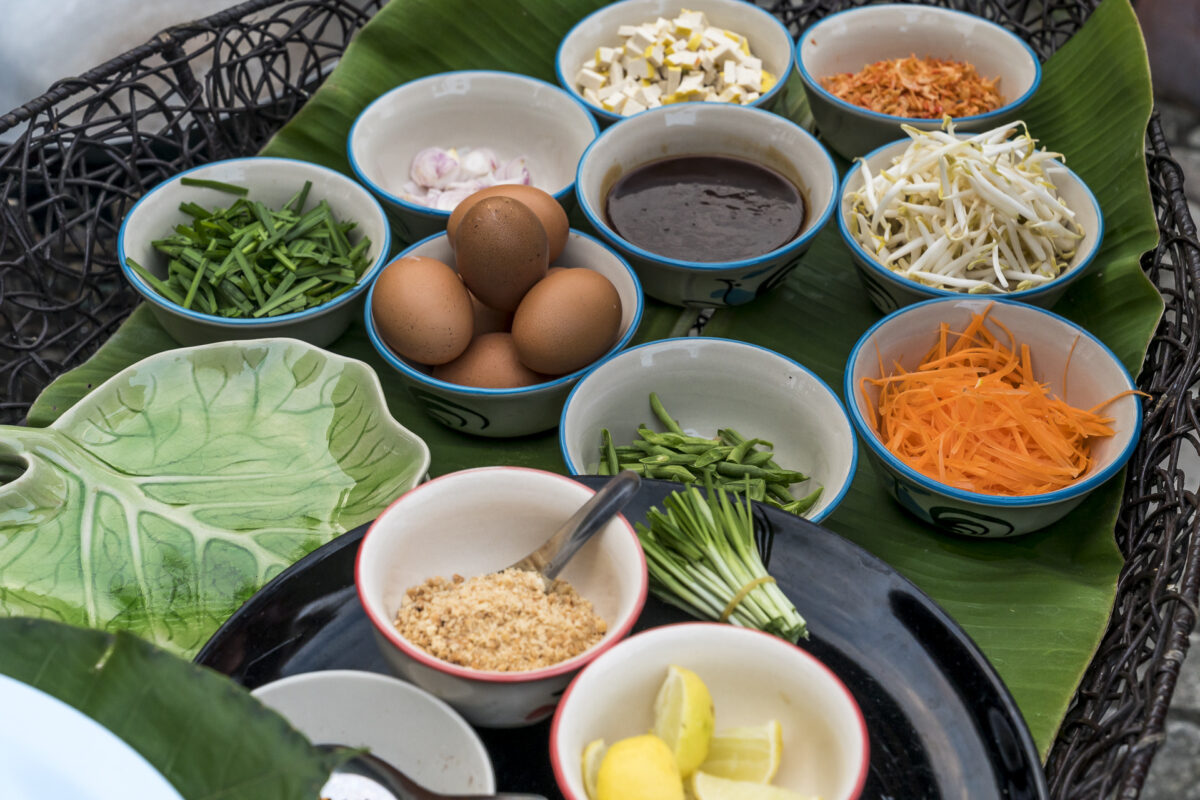
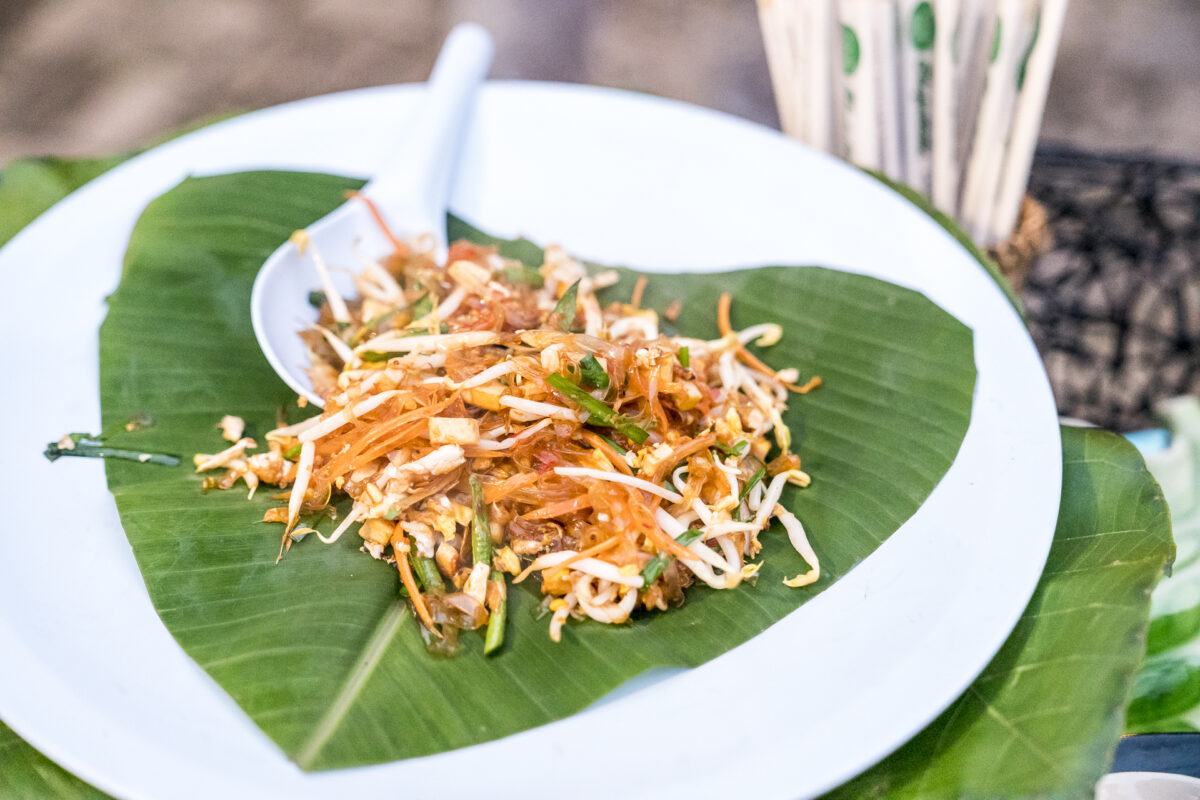
Som Tam – der pflückfrische Papaya Salad
One dish I learned to love on the trip to northern Thailand is the green papaya salad (Som Tam). And yes, this is also a classic of Thai cuisine; but if you pick fresh papayas together with the homestay host out in the fields, peel them into narrow strips yourself and serve them as a side dish, this is simply too delicious to go unmentioned. Unfortunately, we don’t have any freshly picked green papayas and so we can only transport the taste of Ban Na Ton Chan to our own four walls in Zurich West to a limited extent. If you still want to try this, you will need the following ingredients:
- green papayas
- Peanuts
- Rote Chillis
- Limes
- Sugar
- Fischsauce
- Knoblauch
- as needed: green beans and/or tomatoes
And otherwise, it’s best to put the homestay of Pa-Pong in Ban Na Ton Chan (not far from the Si Satchanalai Historical Park) on your bucket list.
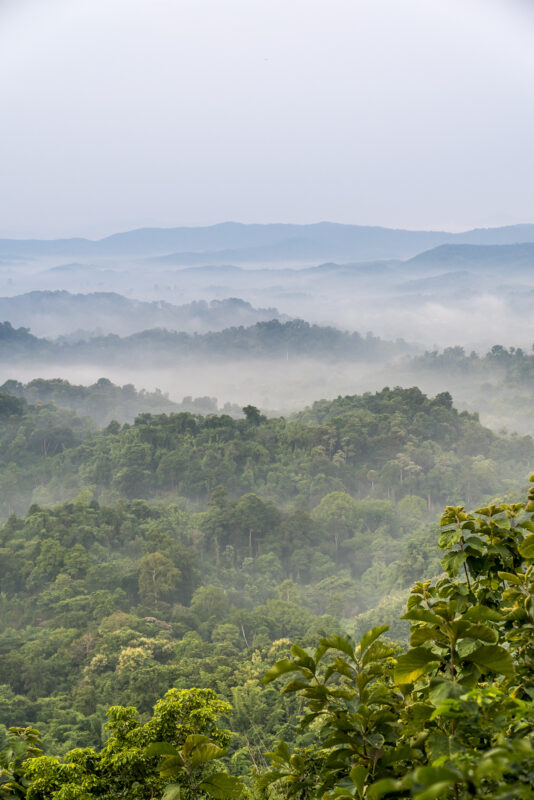
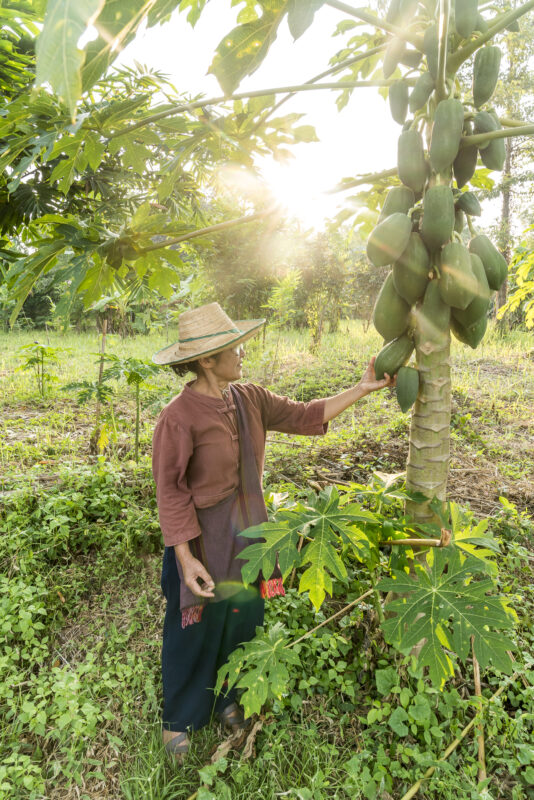
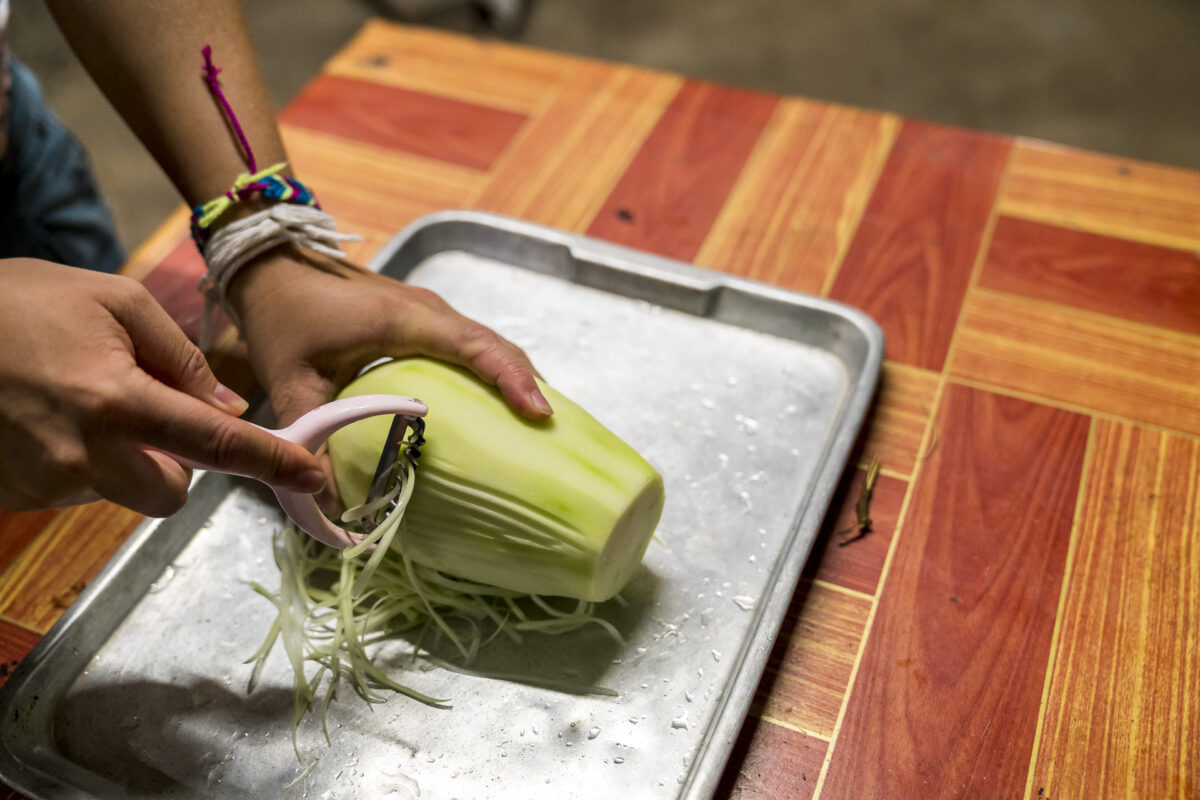
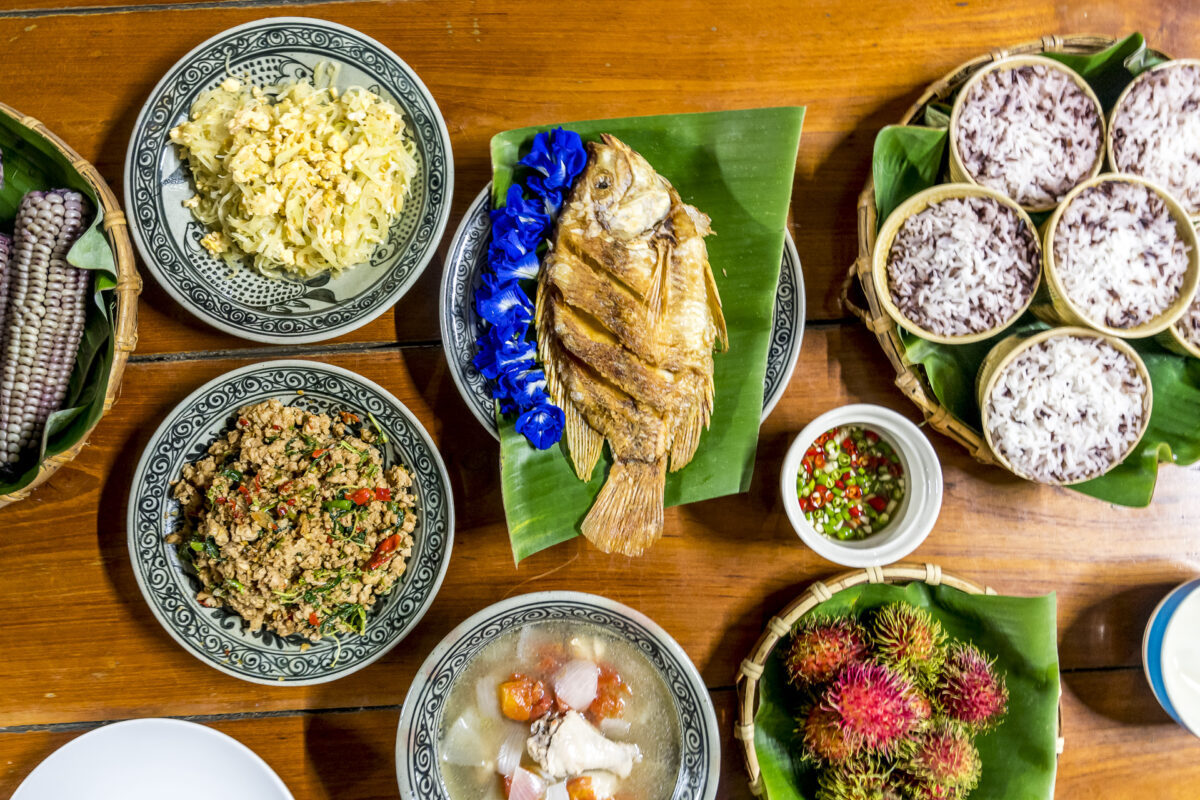
Khao Perb – the local hero
In Ban Na Ton Chan we not only ate the best papaya salad far and wide, but also cooked a local specialty called «Khao Perb». These are fresh rice noodles filled with vegetables (water spinach, cabbage, sprouts) and then served in a pork broth (but of course you can also use a vegetable broth). A detailed recipe to cook at home can be found here: Khao Perb Noodle
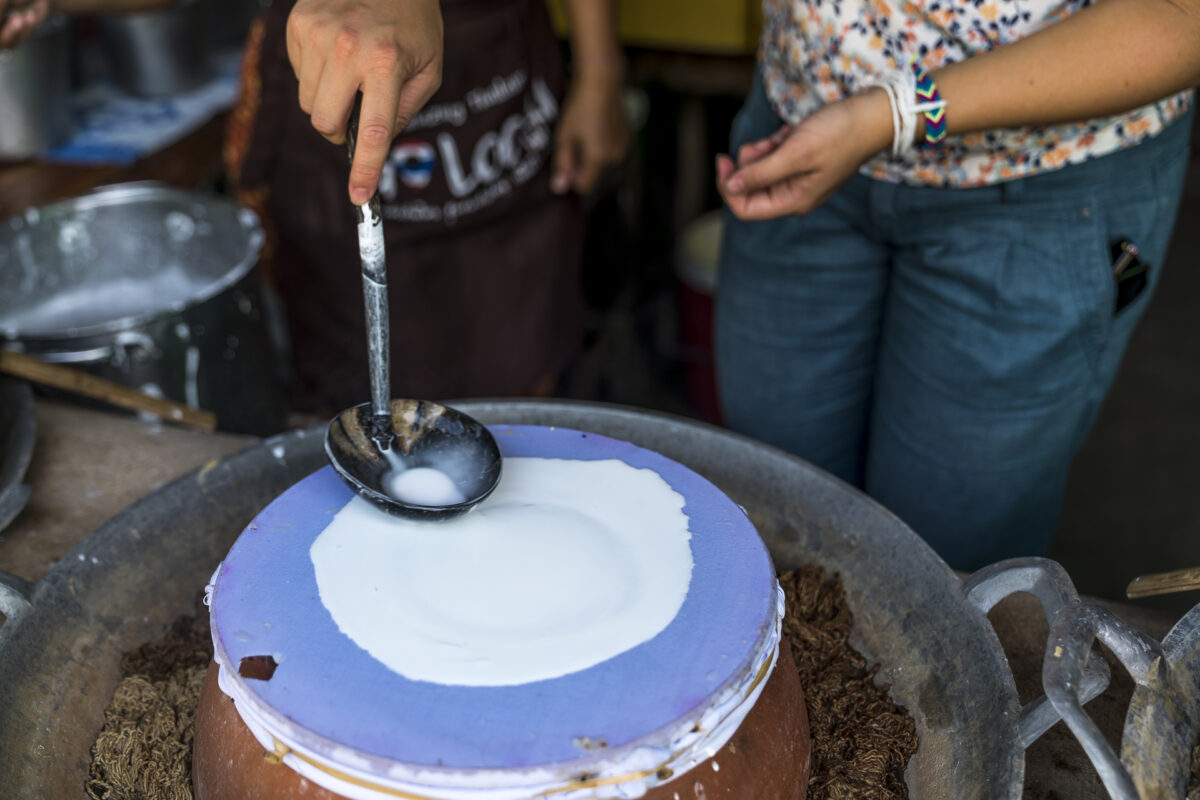
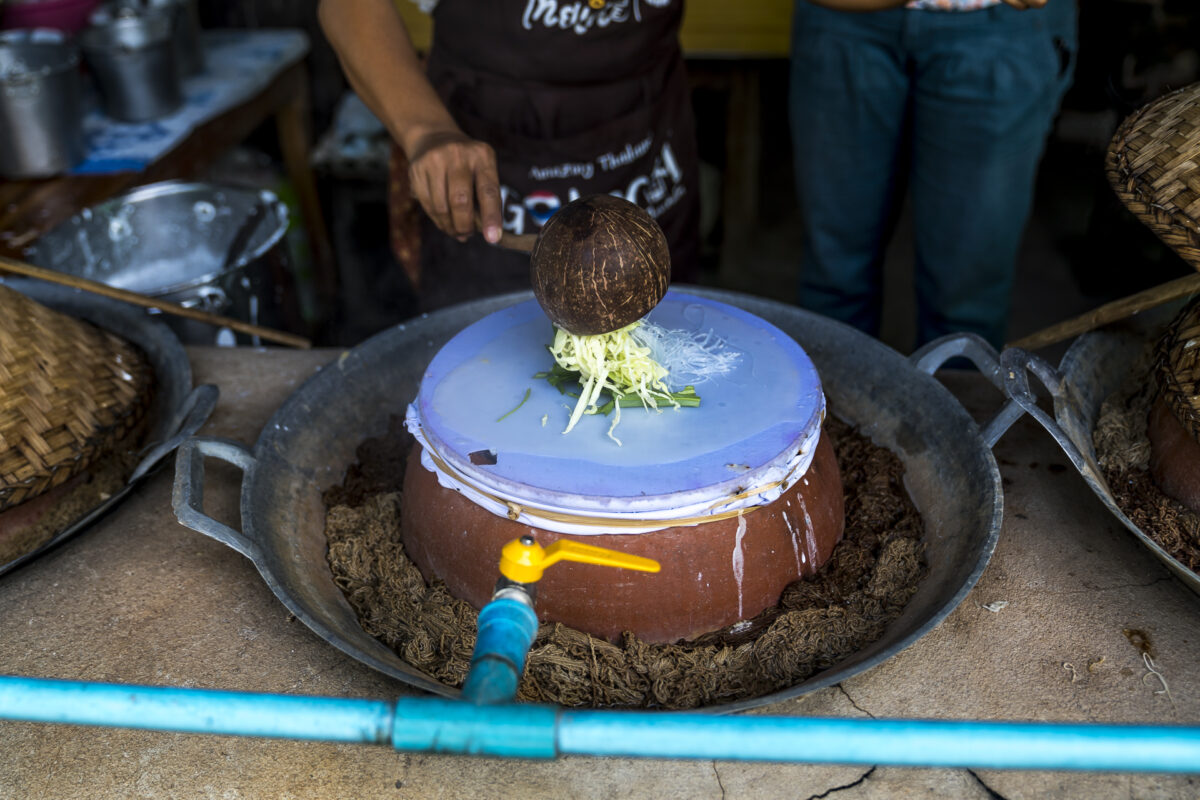
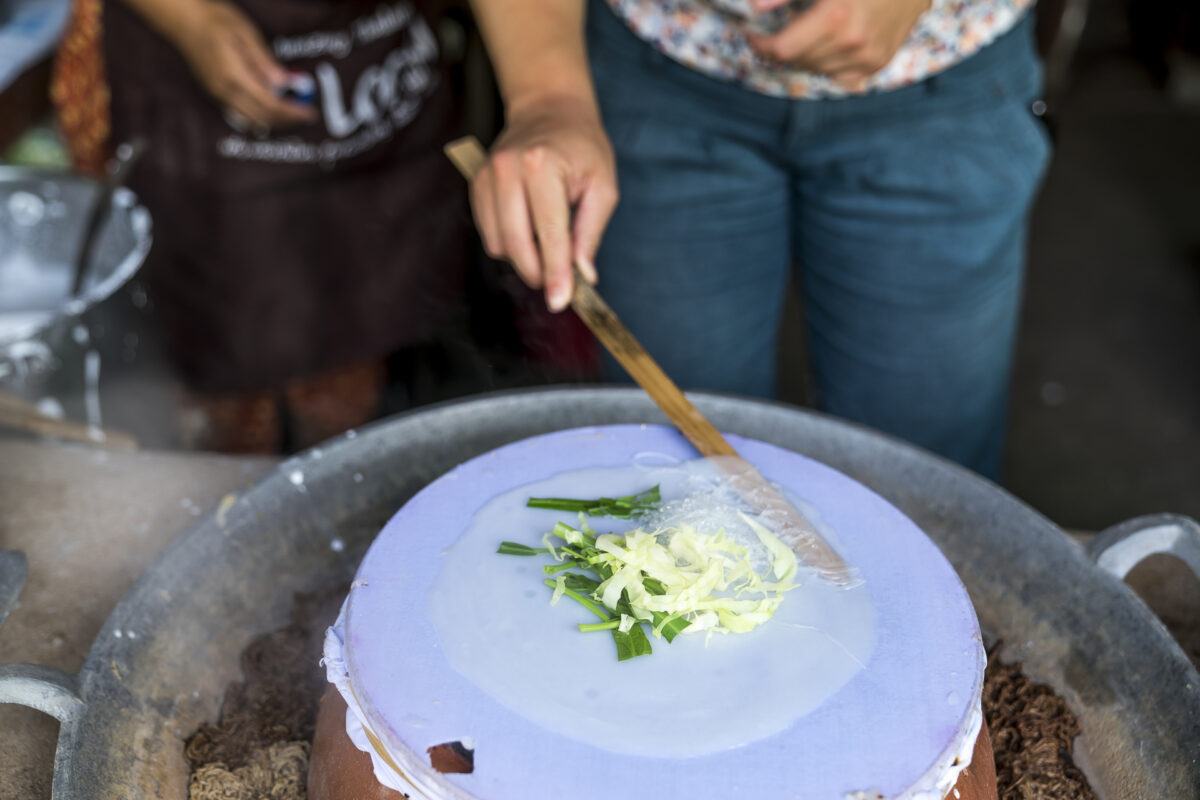
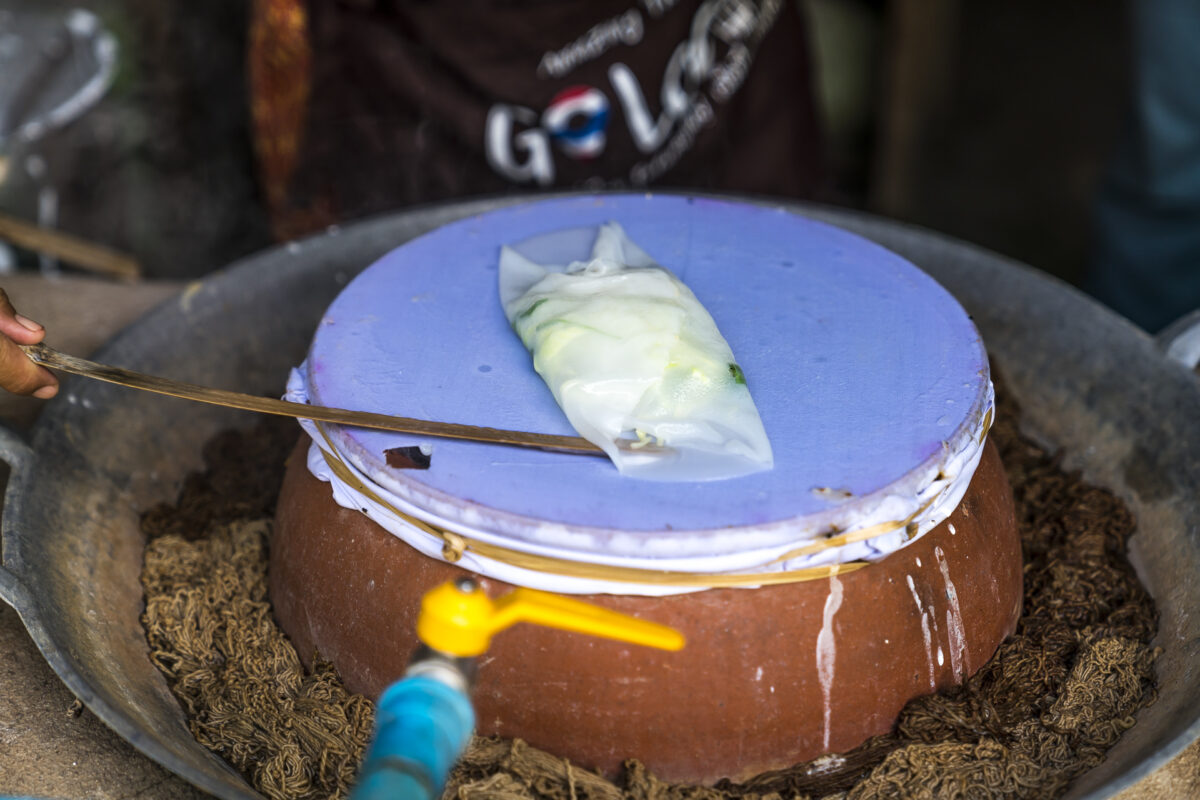
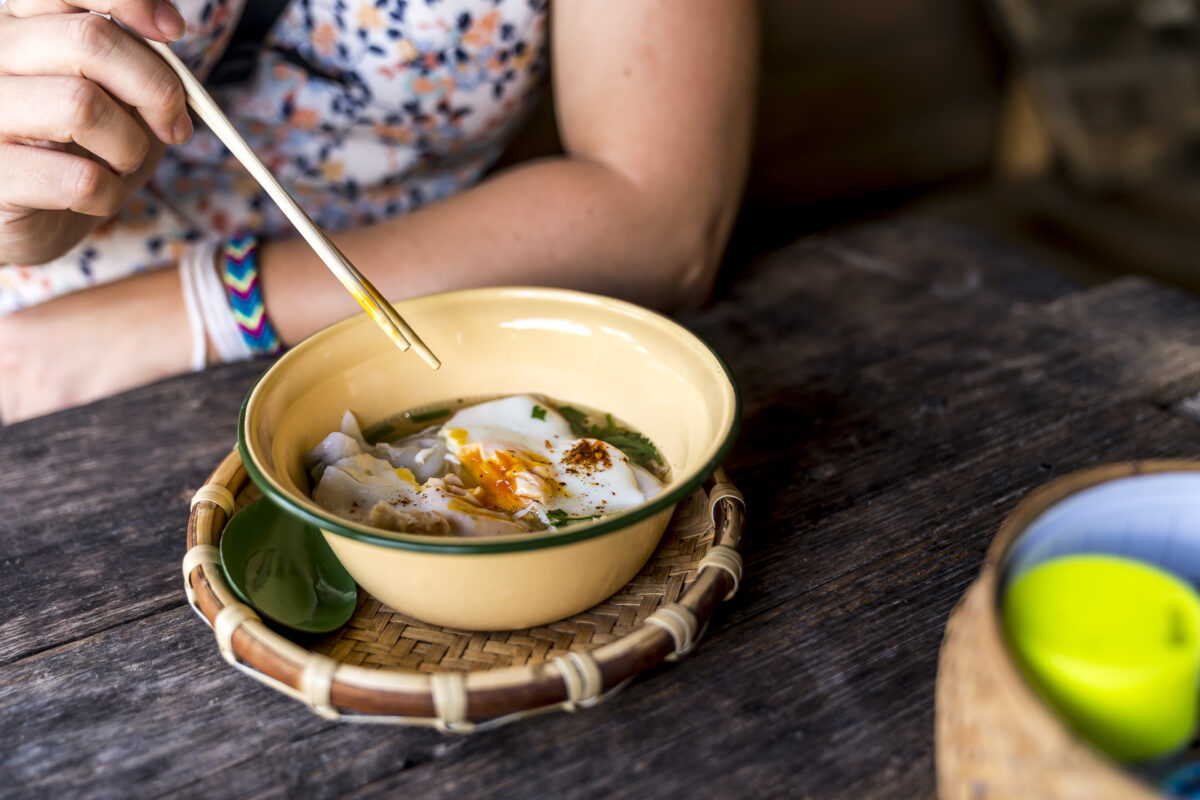
Rat Na – the tastiest noodle soup
What we usually describe as a simple “noodle soup” is in fact a result of a variety of combinations of noodles, broth and meat/fish/vegetables. We enjoyed all kinds of noodles on our trip and it would be a lie if I said that I knew the correct name for each one. One noodle soup that I remember as particularly outstanding is one we ordered from a simple street café located on Route No. 11. The classic broth here is enriched with fresh shiitake mushrooms as well as homemade thick rice noodles and served in traditional lampang chicken bowls. Definitely worth a stop!
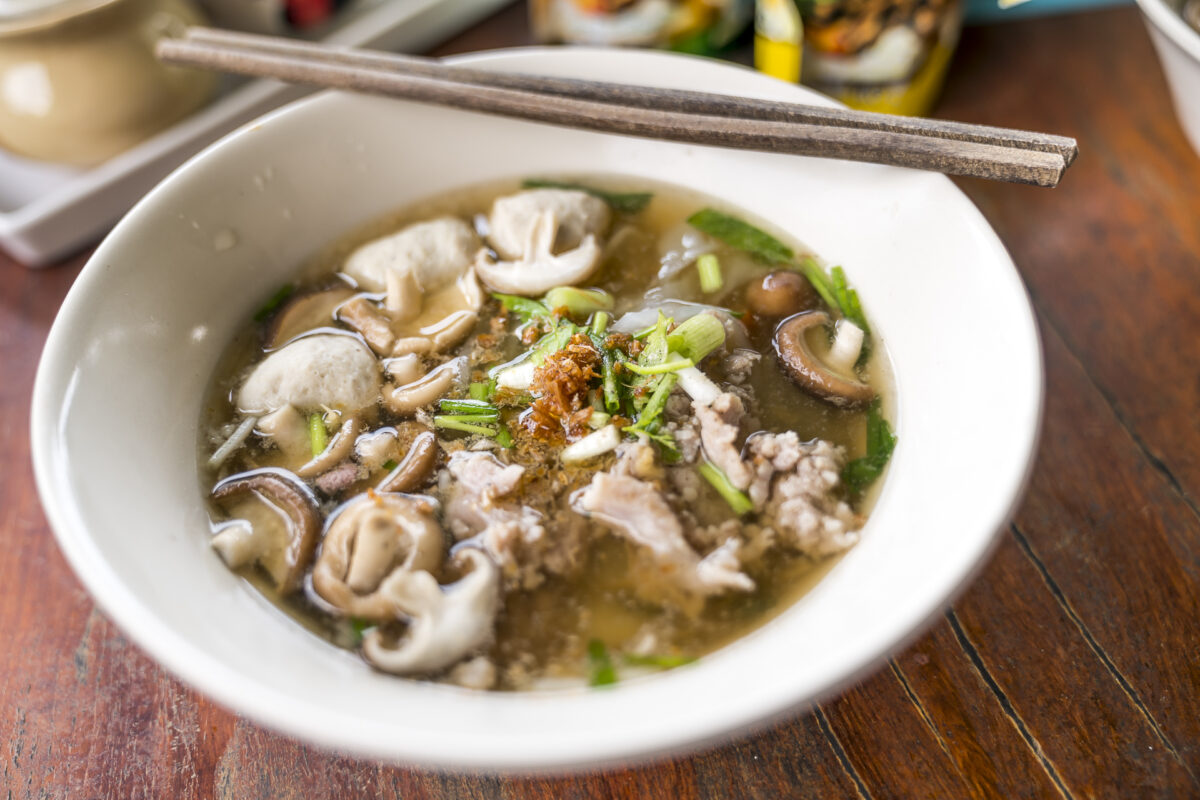
Sticky Rice with Mango – the dessert favorite
Sweet sticky rice with mango is the Thai dessert classic par excellence and in terms of popularity the sweet counterpart to Pad Thai. Nevertheless, on our last trip to Thailand, a whole week passed until we treated ourselves to this dessert for the first time in a simple alley kitchen in Sukhothai. But this was mainly due to the fact that we had tasted our way through the lesser-known dishes of the region the days before.
In Thailand, you can get the dish in the simple markets as well as in more upscale restaurants. And sticky rice with mango is also relatively easy to cook at home – the biggest challenge here is to find a really nice sun-ripened, juicy mango. Of course, instead of mangoes, you can simply use a seasonal fruit growing in our latitudes (e.g. also in the form of compote) as a side dish. In addition, you will need the following ingredients:
- Glutinous rice (preferably soaked in water for a few hours)
- Coconut milk
- Sugar (or cane sugar)
- A little salt
You can find step-by-step instructions on the website of Eating Thai Food, for example
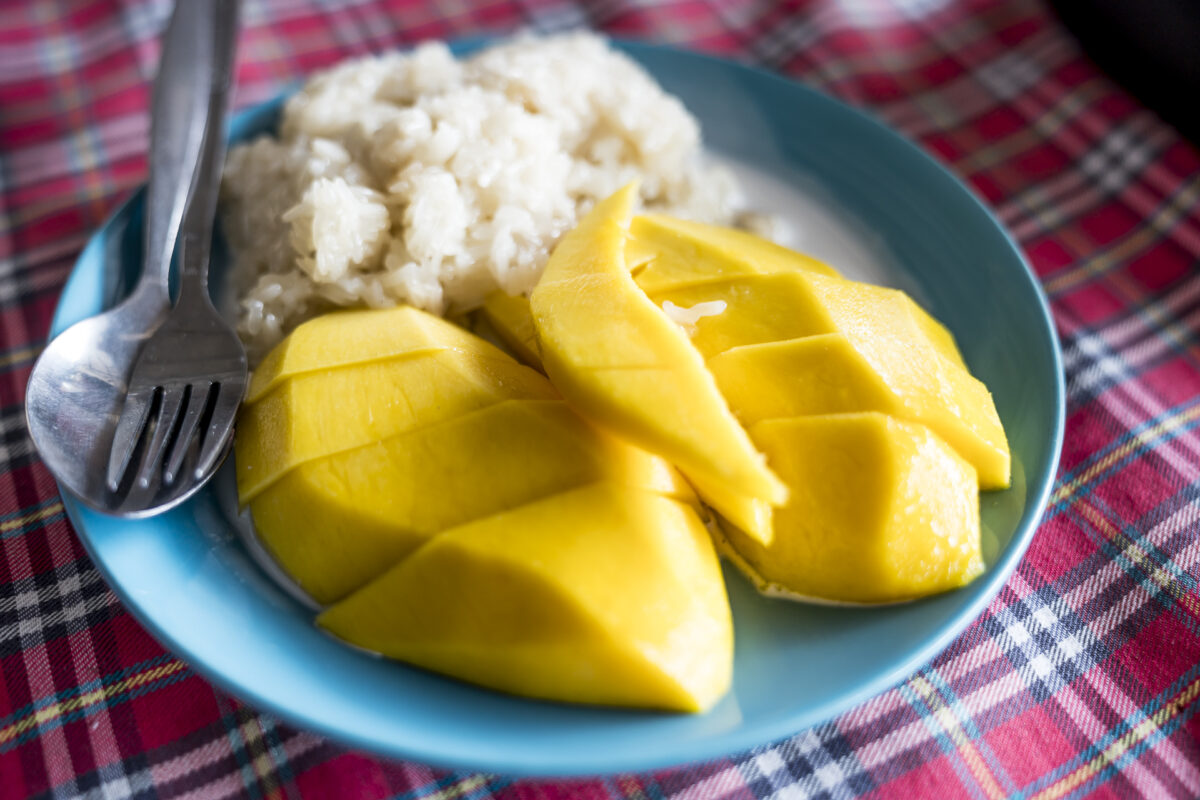
Guava – the vitamin C bomb
During a visit to the village of Pang Ha in the Golden Triangle (about an hour’s drive north of Chiang Rai) we got the opportunity to visit the Kimju Guava Farm and were allowed to taste the harvest-ready fruits directly in the field. Visually, guava is similar to pears and quinces – it tastes sweet and sour and wonderfully refreshing. A really tasty and, above all, very healthy snack.
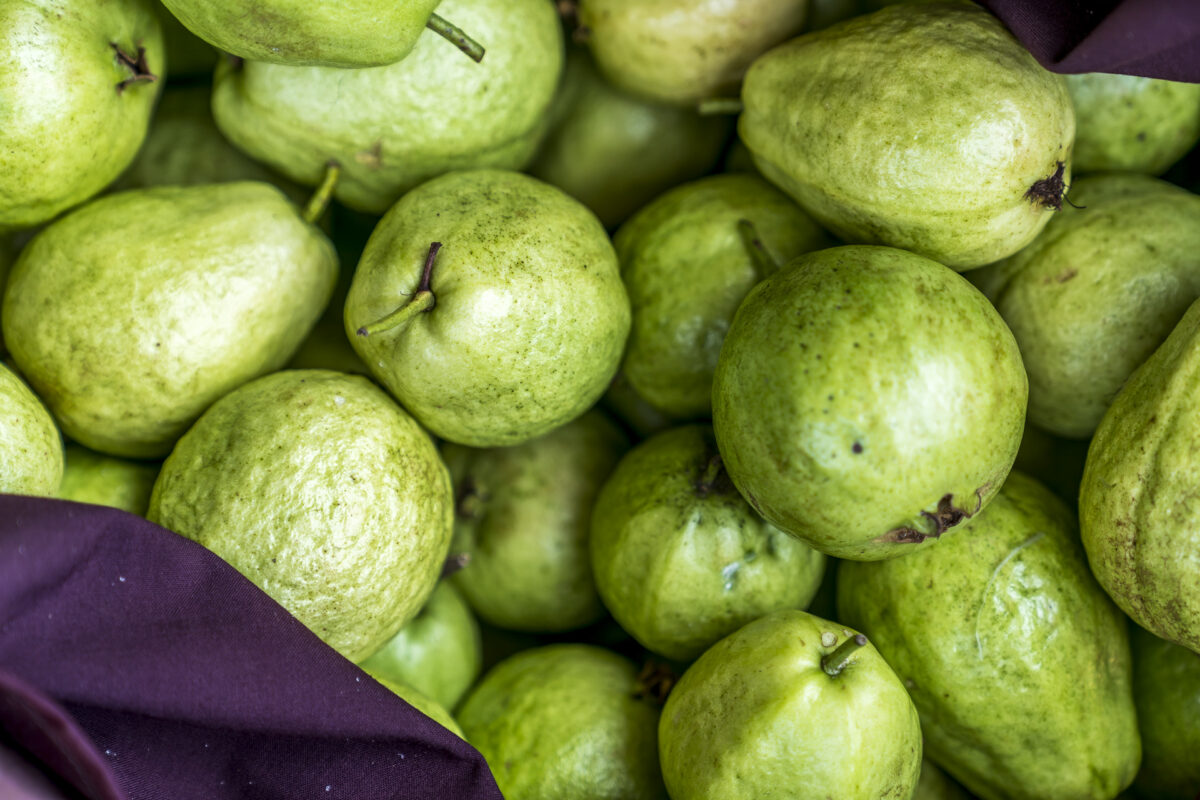
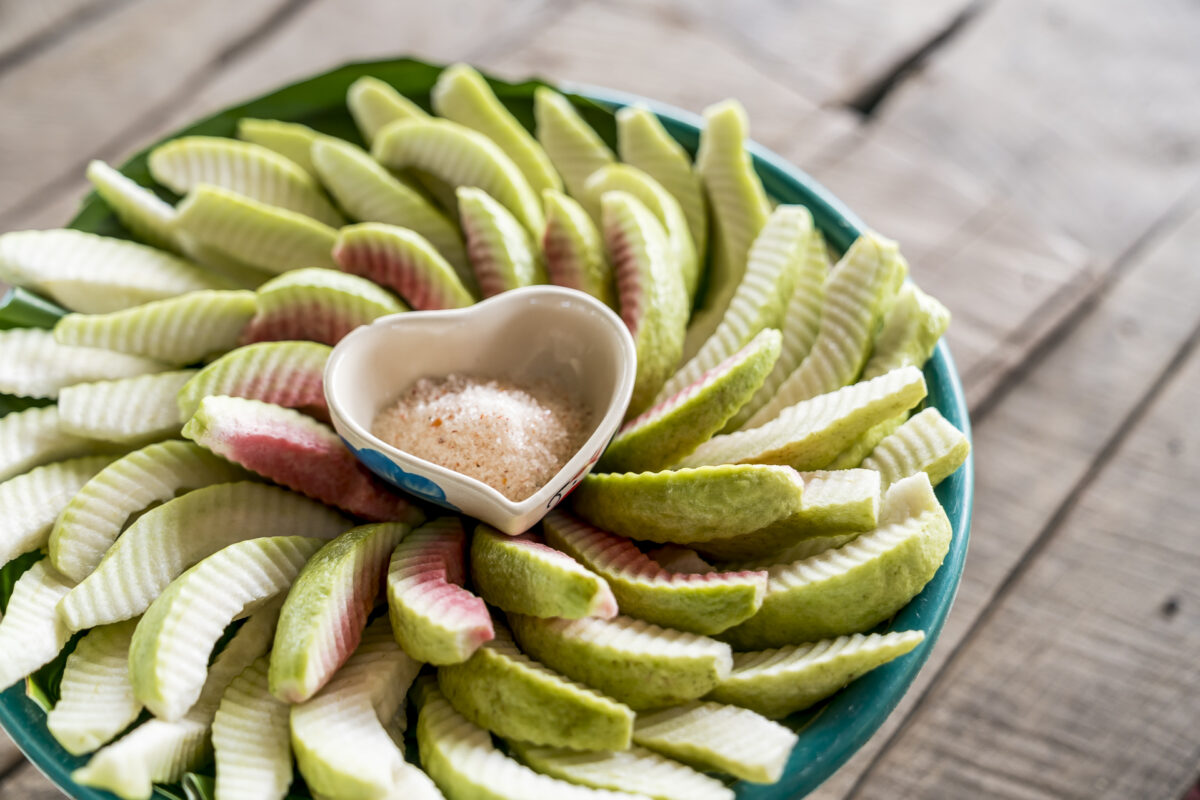
So, has this food guide made your stomach growl or even awakened the desire to travel to Thailand? Cooking recipes is currently still the easiest way to combat wanderlust. The travel situation is definitely not yet “back to normal” – but the current efforts allow hope that international travel will become more conceivable again in the second half of 2021. Thailand has also adjusted its quarantine regulations to the beginning of April (now basically 10 instead of 14 days) and plans to further relax the entry requirements for vaccinated people from July 2021.
Up-to-date travel information can be found on the Swiss website of the Thai Tourism Board.





Leave a Reply